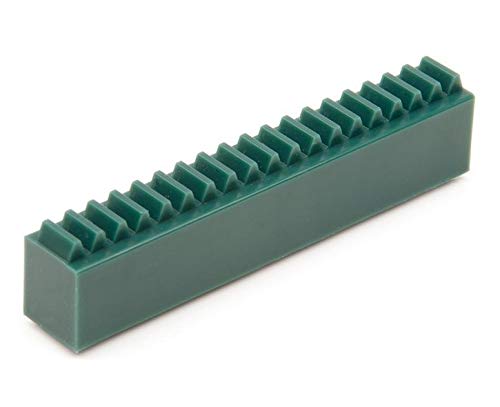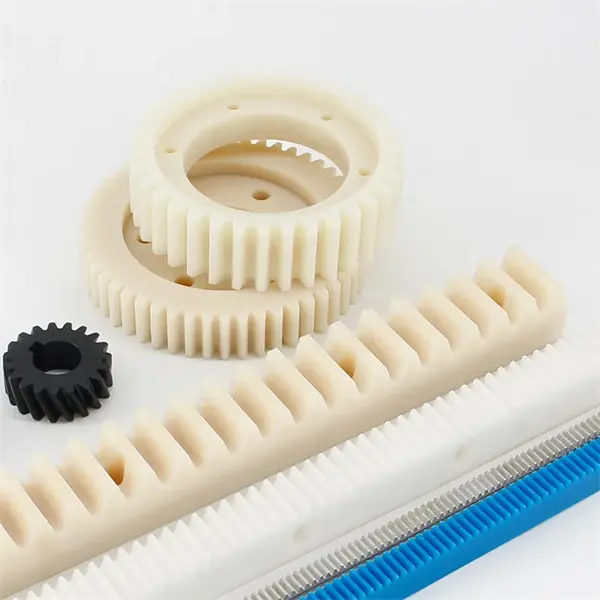Product Description
| AELWEN NO. | AEL-38240 | BRAND | “AELWEN” or Customer’s Brand |
| LINKED VEHICLES | TOYOTA Highlander 2004-2007 | ||
| OE INFO | 44200-48090 | ||
| XIHU (WEST LAKE) DIS.-DRIVE | LEFT HAND | ||
| OTHER INFO | Hydraulic Steering Gear Assy | ||
| Our factory is specialized in researching and developing steering gear since 2003. We have obtained ISO/TS16949 Quality Management System Certification. We have professional production equipment & assembly line and advanced assembly testing facility for steering valves and steering gear. Our main markets are Europe and the Americas. We attach great importance to the quality of personnel and staffs. “Leading the technology, advanced design, timely delivery, credit cooperation” is our principle. CHINAMFG people will never change the pursuit of better quality and further development. |
Aelwen Auto Parts Company comes from a traditional family corporation with producing auto parts. With our more than 10 years experiences, we have developed 10 brands and 40 customers who have cooperated for more than 5 years. The main products of Aelwen are including: Steering Rack, Door Lock & Handle, Auto Switch, Auto Sensor, Drive & Transmission System, Suspension & Steering Parts,Engine Parts,Auto Electronic,Body Parts and other vehicle parts.
/* January 22, 2571 19:08:37 */!function(){function s(e,r){var a,o={};try{e&&e.split(“,”).forEach(function(e,t){e&&(a=e.match(/(.*?):(.*)$/))&&1
| After-sales Service: | 1year |
|---|---|
| Warranty: | 1year |
| Type: | Steering Gear |
| Customization: |
Available
| Customized Request |
|---|
.shipping-cost-tm .tm-status-off{background: none;padding:0;color: #1470cc}
|
Shipping Cost:
Estimated freight per unit. |
about shipping cost and estimated delivery time. |
|---|
| Payment Method: |
|
|---|---|
|
Initial Payment Full Payment |
| Currency: | US$ |
|---|
| Return&refunds: | You can apply for a refund up to 30 days after receipt of the products. |
|---|

How does the design of the rack and pinion affect its performance?
The design of the rack and pinion plays a significant role in determining its performance characteristics. Here’s a detailed explanation of how the design factors of a rack and pinion system can affect its performance:
- Tooth Profile: The tooth profile of the rack and pinion gears can impact the performance of the system. Different tooth profiles, such as straight, helical, or custom-designed profiles, have varying effects on factors such as load distribution, noise generation, efficiency, and backlash. The selection of the tooth profile should be based on the specific application requirements and considerations.
- Module and Pitch: The module (or diametral pitch) and pitch of the rack and pinion gears are crucial design parameters that affect performance. The module determines the size and spacing of the teeth, while the pitch represents the distance between corresponding points on adjacent teeth. The module and pitch selection influence factors such as torque capacity, smoothness of motion, precision, and load distribution. Optimal module and pitch values should be chosen based on the load, speed, and accuracy requirements of the application.
- Material Selection: The choice of materials for the rack and pinion components directly impacts their performance and durability. Factors such as strength, wear resistance, corrosion resistance, and friction characteristics should be considered when selecting materials. Common materials used for rack and pinion systems include steel, stainless steel, aluminum, and various alloys. The material selection should align with the application requirements to ensure reliable and efficient performance.
- Backlash: Backlash refers to the clearance or play between the teeth of the rack and pinion gears. It can affect the accuracy, precision, and responsiveness of the system. Minimizing backlash is crucial in applications that require precise positioning and motion control. The design of the rack and pinion system should incorporate measures to reduce or compensate for backlash, such as proper tooth profile selection, preloading mechanisms, or backlash compensation techniques.
- Geometry and Tolerance: The geometric design and tolerance levels of the rack and pinion system impact its performance. Factors such as tooth geometry, surface finish, dimensional accuracy, and concentricity influence the efficiency, smoothness of operation, noise generation, and overall quality of motion. High precision and tight tolerances are often desirable for applications that require precise positioning and smooth motion control.
- Lubrication: Proper lubrication is essential for the smooth operation and longevity of rack and pinion systems. Lubricants reduce friction and wear between the gears, ensuring efficient power transmission and minimizing the risk of damage. The design of the rack and pinion system should incorporate adequate lubrication mechanisms, such as lubricant reservoirs, oil passages, or grease fittings, to facilitate proper lubrication and ensure optimal performance.
- Stiffness and Rigidity: The stiffness and rigidity of the rack and pinion components influence their ability to withstand loads and minimize deflection. A well-designed rack and pinion system should exhibit sufficient stiffness and rigidity to maintain accuracy and prevent excessive deformation or backlash under load. Factors such as the material selection, geometry, and cross-sectional design of the rack and pinion components contribute to their stiffness and rigidity.
By considering factors such as tooth profile, module and pitch, material selection, backlash, geometry and tolerance, lubrication, and stiffness, the design of a rack and pinion system can be optimized to achieve the desired performance characteristics. A well-designed system ensures efficient power transmission, high accuracy, smooth motion control, durability, and reliable operation in various applications.
\
How do rack and pinion systems contribute to efficient power transmission?
Rack and pinion systems play a significant role in facilitating efficient power transmission in various mechanical applications. Here’s a detailed explanation of how rack and pinion systems contribute to efficient power transmission:
Rack and pinion systems offer several advantages that contribute to efficient power transmission:
- Direct Power Transfer: Rack and pinion systems provide a direct and efficient means of power transmission. The teeth of the pinion gear mesh with the teeth of the rack, creating a positive engagement. This direct contact allows for minimal power loss during transmission, as there are no intermediate mechanisms or components to introduce friction or slip.
- High Mechanical Efficiency: Rack and pinion systems are designed to have high mechanical efficiency, meaning they maximize the output power compared to the input power. The teeth of the pinion and the rack are carefully designed and machined to minimize friction and ensure smooth motion. This efficient transfer of power reduces energy waste and enhances overall system performance.
- Low Backlash: Backlash refers to the play or clearance between the teeth of the pinion and the rack. Rack and pinion systems can be designed with minimal backlash, which contributes to efficient power transmission. Low backlash ensures precise and immediate response to input motion, minimizing energy losses associated with tooth clearance and backlash compensation.
- Efficient Torque Transmission: Rack and pinion systems are capable of transmitting high torque efficiently. The engagement of the pinion teeth with the rack teeth distributes the applied torque evenly along the contact area, resulting in efficient torque transmission without slippage or power dissipation. This characteristic makes rack and pinion systems suitable for applications that require high torque output.
- Compact Design: Rack and pinion systems offer a compact design compared to other power transmission mechanisms. The linear nature of the rack allows for a more straightforward integration into space-limited applications. This compact design minimizes energy losses due to unnecessary mechanical components or complex transmission paths, resulting in more efficient power transmission.
- High-Speed Capability: Rack and pinion systems are capable of efficient power transmission at high speeds. The direct contact between the teeth of the pinion and the rack enables rapid and precise motion transfer without significant energy losses. This characteristic is advantageous in applications that require quick and accurate movements.
By combining features such as direct power transfer, high mechanical efficiency, low backlash, efficient torque transmission, compact design, and high-speed capability, rack and pinion systems contribute to efficient power transmission in a wide range of applications. These systems are commonly used in industries such as automotive, robotics, machinery, and aerospace, where efficient power transfer is crucial for optimal performance and energy savings.

What are the primary components of a rack and pinion setup?
In a rack and pinion setup, there are two primary components that make up the mechanism: the rack and the pinion gear. Here’s a detailed explanation of each component:
- Rack: The rack is a straight bar with teeth cut along its length. It resembles a gear but in a linear form. The rack is typically a long, narrow strip made of metal or a durable engineering plastic. The teeth on the rack are evenly spaced and have a specific profile that allows them to mesh with the teeth on the pinion gear. The rack can be stationary, meaning it remains fixed in place, or it can move linearly in response to the rotational motion of the pinion gear.
- Pinion Gear: The pinion gear is a small circular gear with teeth that mesh with the teeth on the rack. It is usually mounted on a rotating shaft, such as a motor shaft or an actuator. When rotational force is applied to the pinion gear, it rotates, causing the teeth on the pinion to engage with the teeth on the rack. The pinion gear transfers its rotational motion to the rack, resulting in linear motion. The size and design of the pinion gear, including the number and shape of its teeth, are chosen based on the specific application requirements.
Together, the rack and pinion gear form a mechanical linkage that converts rotational motion into linear motion. As the pinion gear rotates, its teeth push against the teeth on the rack, causing the rack to move linearly. This linear motion can be harnessed for various applications, such as steering systems, robotic arms, linear actuators, and other mechanisms that require controlled linear movement.
In summary, the rack and pinion setup consists of a rack, a straight bar with teeth, and a pinion gear, a small circular gear. These two components work together to enable the conversion of rotational motion into linear motion, offering a versatile and efficient solution for various mechanical systems.


editor by Dream 2024-04-29